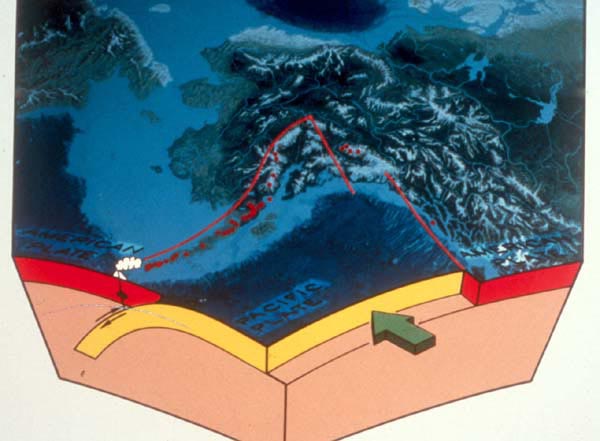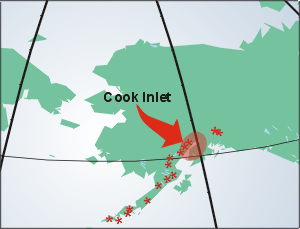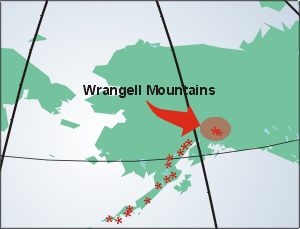
Image courtesy of U.S. Geological Survey AVO
PLATE TECTONICS
Geologically the Alaskan province in North America represents a modern tectonic fold belt that has been evolving since the middle of the Cretaceous period (Howell, 1995) and has resulted in the accumulation and accretion of many pieces of continental crust over time.
The accretion of these terrains led to the development of a subduction zone where the Pacific Plate underthrusts below the North American Plate (Crossen, 2001), this can be seen diagrammatically in figure 1. The red line represents the line of volcanoes down the Alaskan peninsula while the thick red block is the North American plate and the yellow block the Pacific plate.
As the Pacific plate sinks it begins to heat and melt forming the liquid magma that rises up and forms the chain of volcanoes. In the more Northern and Central areas of the subduction zone rates of subduction are relatively fast at 6-8cm per year therefore volcanoes situated on this portion are more active (Crossen, 2001) than those to the south where subduction rates are slower.
Subduction related volcanoes tend to be stratovolcanoes that have steep sides near the vent but gentler slopes near the base

